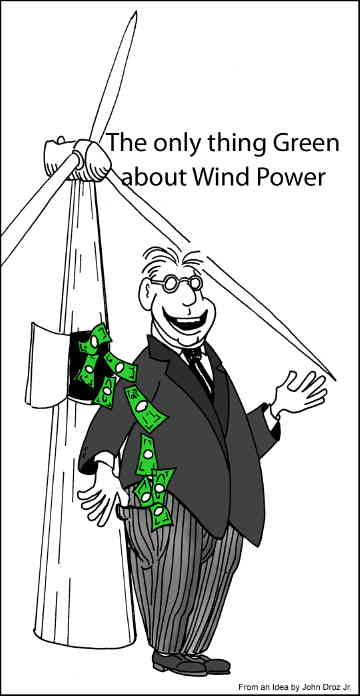The ONLY legitimate reason industrial wind power should exist today is for it to live up to its promoter’s assurances that it will meaningfully (and affordably) help reduce greenhouse gas emissions (e.g. CO2). However (since neither one of these conditions are being met), in almost all cases, wind power development is instead sold to a community based on the financial incentives offered by the developers.
This, of course, is a completely different and unrelated consideration. As the picture on the right shows, the only thing green in this whole matter is the substantial profit being made by the developers and their paid supporters. So begins a series of serious incongruities.
It is an unfortunate indictment of our society today that so many important decisions are primarily based on “what’s in it financially for me.” One obvious consequence of this shortsighted and selfish perspective is that we get what we deserve.
To those people who say wind power is good because it brings money to their community, then we would expect them to be leading the charge promoting other local economic developments that would also bring money to their community, like: a regional landfill, a chemical plant, a prison for terrorists, etc.

Courtesy of WindToons.
See their site for many other insightful representations.